I never would have guessed that within the span of a single year I would be playing and writing about multiple kaleidoscopic, abstract black-and-white games released in September 2015 with gameplay centered around moving in circles while avoiding red hazards, but here we are. Circa Infinity with its mind-melting, psychedelic visuals was one of the best indie games I played in 2015 and, while it took me an entire year to stumble upon it, I love Expand with its more subdued, somber, and carefully controlled acts of mesmerization almost as much. However, the similarities between these two games largely begin and end with their basic concepts as Expand has its own brand of surprises in store for players.
Having seen nothing of the game other than a few screenshots before going in, I was surprised by and first fell in love with Expand the moment I arrived at the title screen. The long, haunting notes playing over a stark void of black and white immediately shattered the preconceptions I had of this being an upbeat, intense experience and utterly intrigued me. The pink square with a red outline serves as the closest thing to a protagonist and its movement is gentle yet responsive, slightly curving as it moves around the circle in the center of the screen without taking away the sense of control or precision. Moving downward to start a new game results in a small piece of the darkness pulling away to reveal a path to a small niche labelled ‘START’ which encloses around the player’s square, rotates through complete darkness, and opens up a path on a new screen from which players can choose a save file. This title screen isn’t just stylish, it’s also a wonderful tutorial. Before the player has even officially started a new game, they have already been introduced to how the square moves, how screen transitions work, and to seek out small recesses in order to make progress.
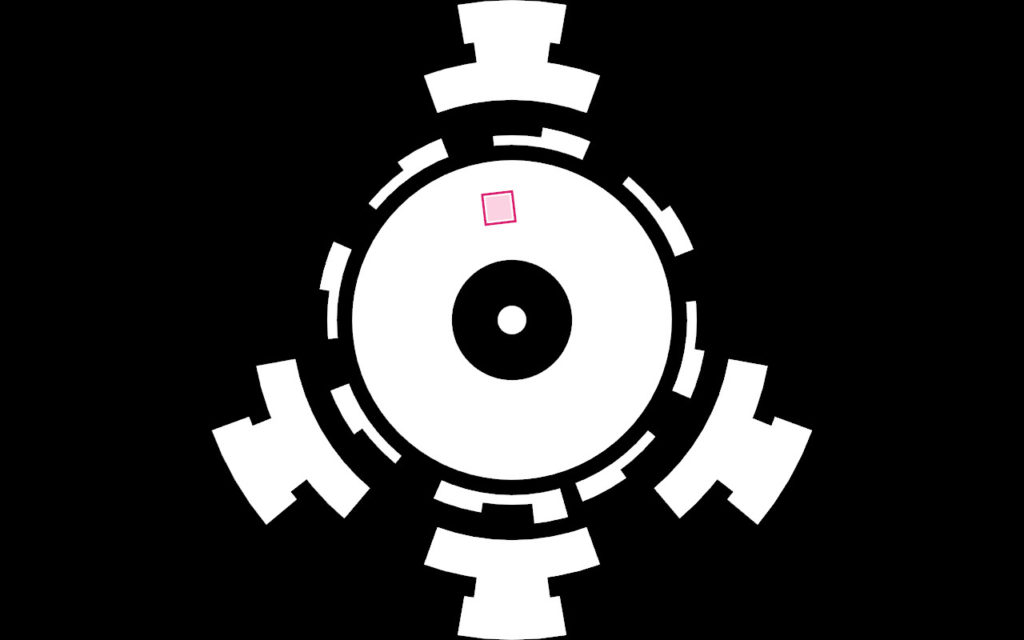
A somewhat more traditional tutorial follows the title screen, though this one revolves more around the setting and its hazards. Guided by words from an unseen speaker, the player glides through several spiraling corridors as the world peels away and shifts around them. The first few moments of this tutorial further familiarize players with moving through this circular world at various distances away from the center and continue to help cement the somber and serious atmosphere. Soon enough, the more dynamic elements are introduced to the player – paths which automatically begin to close behind the player once they are stepped on, walls which shift and turn, and various blocks which push and crush the protagonist. The introduction of these blocks is a particularly important part of this sequence as introduces two concepts. First, objects other than the player’s square expand as they move away from the center and shrink as they get closer, giving the world a more three-dimensional, cone-like feel which needs to be adapted to in order to successfully dodge hazards despite its seemingly flat appearance. Secondly, getting crushed here (and in any other part of the game for that matter) pauses the action, confines the square to a small space, rotates the screen slightly, and puts the player back at the start of the current segment, revealing the rather generous checkpointing in place while treating the act of failure with the same degree of gentle passivity which permeates the rest of the game. Players also are encourages to get into the habit of moving steadily forward while occasionally breaking their stride to wait for an obstacle to pass, a playstyle which is greatly beneficial in the more demanding parts of the game. Once this tutorial ends players are placed in the labyrinth and the game begins in earnest.
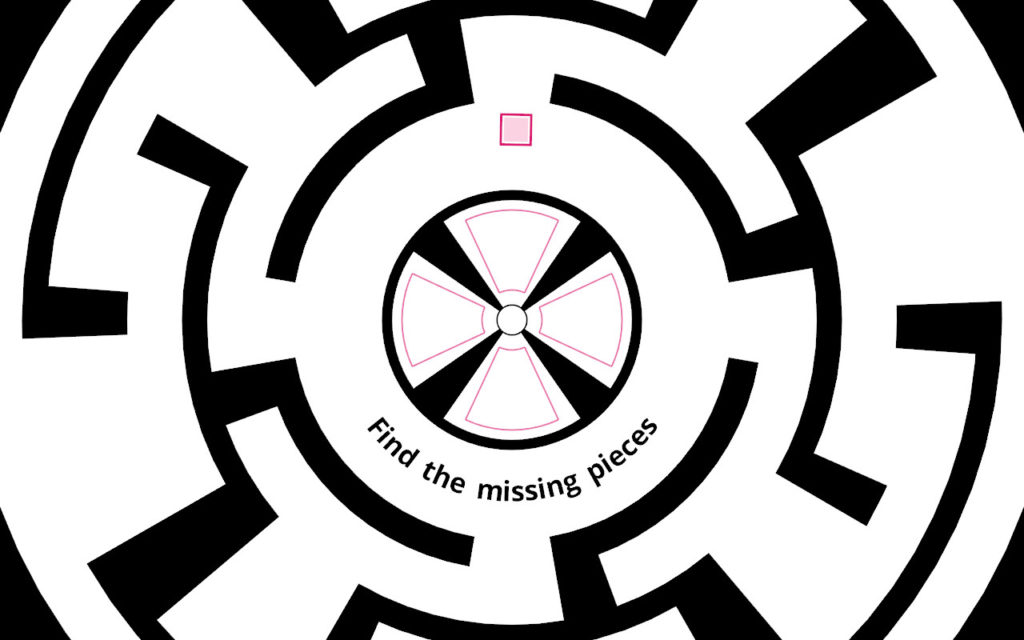
The ‘labyrinth’ which serves as the hub for Expand is actually only a miniature maze with a path leading away in each cardinal direction and four outlines of large pink blocks in the center, each of which is naturally found at the end of one of the four paths. While this setup may look rather nonlinear, it is largely an illusion. Each path outside of the labyrinth leads to a smaller hub where players will need to go through a few easy and danger-free challenges to reach two buttons which, once pressed, open a path to a new region. These smaller hubs are each found in a specific direction, but the regions, which make up the majority of the game, are not. For example, “Peril” will always be the first region encountered regardless of which direction is chosen. If this sounds somewhat disappointing, rest assured that this was a decision wisely made as each of the regions builds upon the regions which came before it on top of providing an all-around bump up in difficulty; the introduction of red walls and objects which ‘kill’ the player on contact in Peril is a far easier concept to grasp than shifting around and affecting the movement patterns of walls and red hazards through your own horizontal and vertical movements in Control.
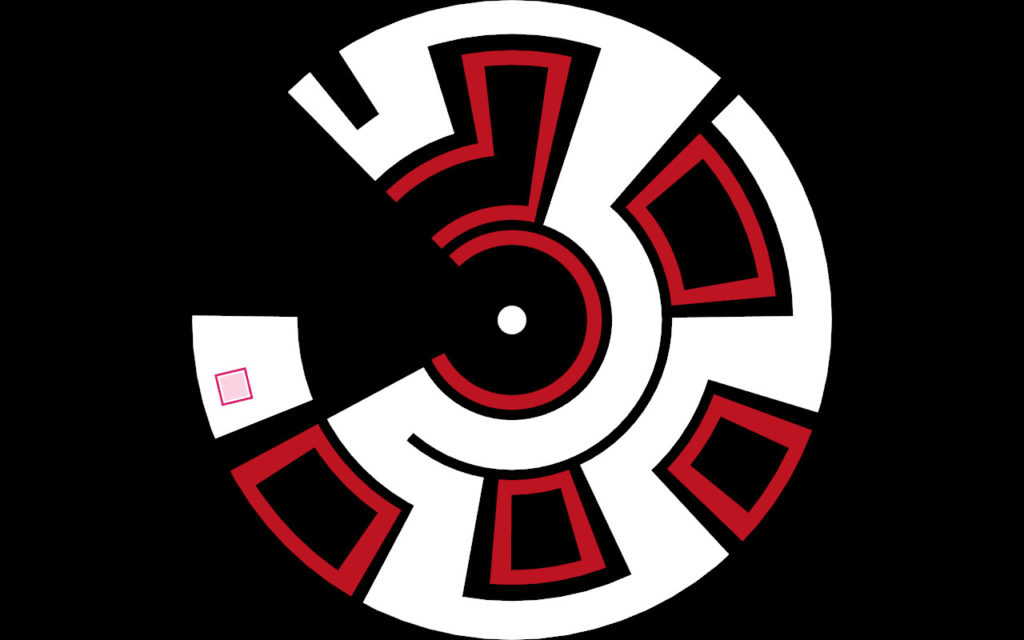
I have already dedicated a fair bit of this article towards discussing how much I adore just about everything about the aesthetics here from the subtly sorrowful tone set by the music to the way the world peels away as you progress through it, but the way Expand plays with perspective is astonishing and often integral to the gameplay. Objects increasing or decreasing in size depending on how close they are to the center despite the deceptively flat appearance created by the sharp, flat colors and the presumably overhead view is just the tip of the iceberg. The whole game can be viewed as taking place around a single, ever-changing circle, but at the same time entering a recess and being rotated to the other side of the screen gives the impression of a screen transition so the viewpoint of game taking place across multiple circular rooms in a massive structure is just as valid. Similarly, completed segments are often gradually wiped away to reveal new challenges as the player makes their way around the circle to seamlessly flow from one challenge to the next, but it is impossible to say if the old portions are truly being replaced and rebuilt or if the player is spiraling upward or downward.
The surprisingly liquid nature of perspective at play here allows for some beautiful designs while also factoring into the gameplay; a color which serves as a platform at one moment can transform into a platform in the next challenge or a hallway may transform into a series of empty rooms. I still remember the first challenge which forced me to literally adjust the way I was looking at the game and it serves as a rather good example. Relatively early on in the game I came across a hallway filled with vertically-aligned red crushing columns, moving in odd patterns and demanding some rather precise movements in order to get through the winding path to the other side. It was remarkably difficult compared to the challenges which had come before it, difficult enough that after a few failed attempts I took a moment to sit back and take a closer look at it. Upon doing so, I realized that all I had to do was flip around how I thought about the room. Instead of being a series of rapidly moving crushers, the red parts became a solid, dangerous floor and instead of being single, wildly winding path the white parts were now a series of rectangular platforms moving and and forth across the lava-like floor. Suddenly, the unusually difficult crusher challenge was transformed into a simple series of moving platforms which I could move between with little effort. This was only the first of many such experiences as half the challenge (and fun) of Expand comes from figuring out the best way to perceive the simple shapes and colors it presents you with.
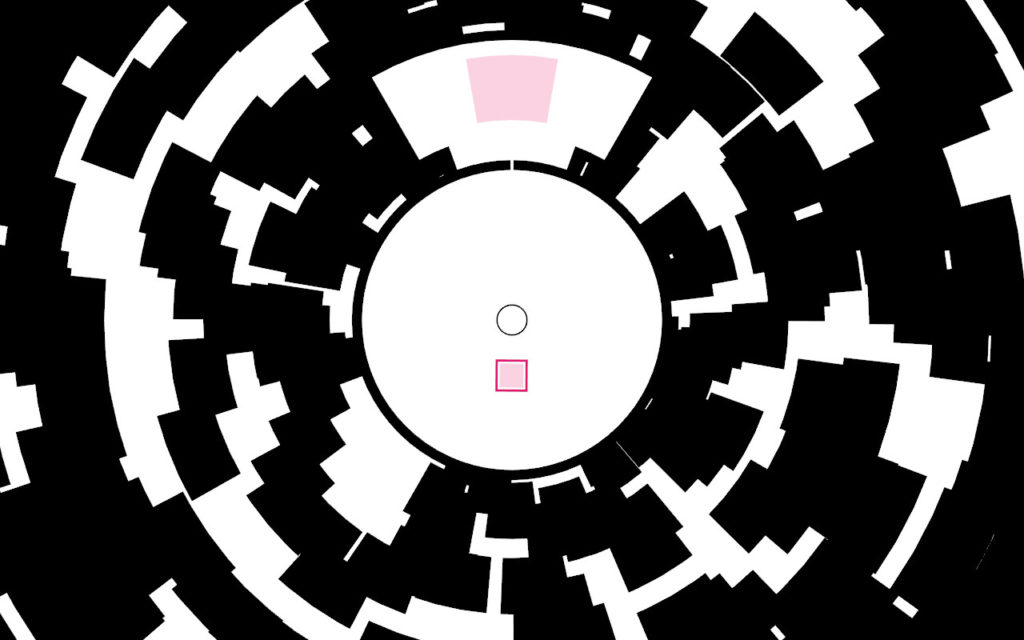
The boss fights are the only parts of Expand where its otherwise excellent quality falls somewhat short. As an actual fight against a tangible entity would fall far too far into the realm of the concrete for this game, these ‘fights’ are extended sequences where a wave or barrage of hazardous red must be avoided alongside some black obstacles at the end of each region. The parts where these fights suffer aren’t even immediately apparent in their designs as they are intense finales which incorporate and expand upon many of the challenges found within their respective regions and, in fact, there is no problem whatsoever with any of these not-quite-fights other than the second and third encounters. Namely, both of these bosses involve a rapidly expanding or sweeping wave of red which the player must rapidly run away from through a series of miniature challenges. Unfortunately, these sequences are also somewhat long and, unlike any other portion of the game, being crushed or touching red at any point sends the player back to the very start of the fight with no checkpointing whatsoever. It’s a design decision which feels wildly out of place in a game focused on short, compelling challenges and needing to go through the early parts of these gauntlets every time you make a mistake near the end can dampen the sense of spectacle with boredom and possibly even frustration. The decision to not include any checkpoints for these two fights becomes even more baffling when you factor in the presence of checkpoints during a similar gauntlet later on in the game. These are ultimately microscopic blemishes on an otherwise wonderful experience, but it’s nevertheless a shame that these two initially impressive sequence are just not very fun to go through and it’s a problem which could have easily been fixed with the addition of a checkpoint or two.
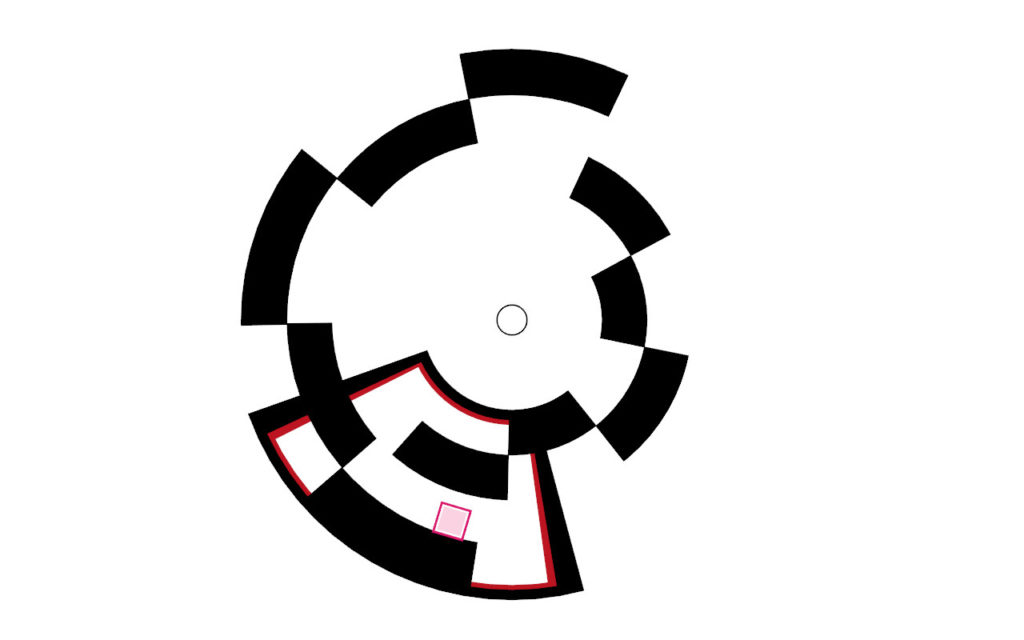
Expand is a journey filled with seeming contradictions. The world is flat yet it has depth and everything takes place within a single, ever-changing circle yet it may instead take place over the series of dozens of winding and spiraling rooms. It is utterly abstract and devoid of anything beyond the faintest shadow of a narrative, yet its perplexing sights are breathtaking and the soundtrack adds a thick atmosphere which wordlessly tugs at your emotions. Challenges are demanding and can be incredibly difficult later on, yet failure only results in the game gently picking you up and slightly rotating the screen, as though to patiently encourage you to try again from a new perspective. I wouldn’t necessarily describe Expand as short and it is definitely worth its modest price, but it can be completed in about two hours and, like a good movie, I would strongly suggest waiting until you have enough time to play it all the way through without interruption as this is an experience which does a phenomenal job of building upon itself and it is certain to leave a lasting impression.